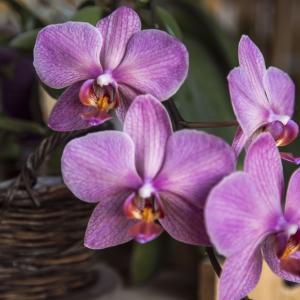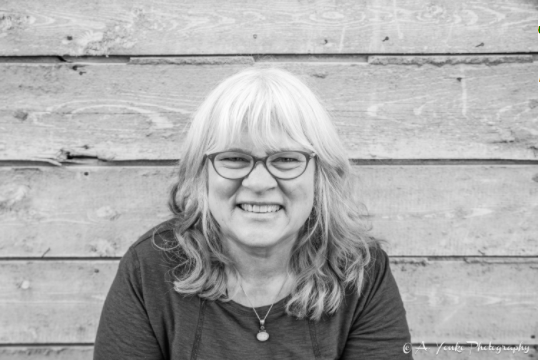Jonah is a bilingual concierge desk clerk at an emotionally wearisome hotel job in Montana.
He spends the overnight shift folding up and stacking tables, skimming soggy pizza slices out of the pool, scrubbing the restaurant dishware, and, in his down time, discontentedly whizzing the ball against the racquetball court wall. His professional life, in his words, has erringly failed to gain suitable “traction.” Elements of him are dormant, waiting for resurrection.
Some nights his utmost challenge is struggling to not to fall asleep, flat-faced, at the front desk. With a tired, grasping look about him (acutely intuited and imbued with a profound emotion by actor Rami Malek), Jonah draws a deep, anxiety-ridden breath and decides that there is yet another new world to conquer. Where the newly married father once saw his life as a riot of possibilities, his latest realizations are startlingly off-putting.
Buster is a puzzling mountain man who breaks into people’s vacation homes for food and shelter and occasionally defecates in their kitchen pots. His own aspirations are less evident. He’s obsessively paranoid of ups and downs and cycles, and he observes harbingers of doom in the cosmological inversions, the cloud formations, and in binary codes. He’s reacting to an untold traumatic experience, withdrawing from a world he sees as exploitative, monolithic, overly reliant on systems, and irrelevant to earlier forms of man. He saunters pristine vacation homes in his grimy long johns and phones in to radio stations to erratically monologue and cuss; for self-edification he listens to horoscope hotlines and live sexually explicit chats.
How the two men are connected and the relationship between one and the other is at the crux of “Buster’s Mal Heart,” a well-crafted, even darkly comic, smaller budget production blurring the lines between prophet and lunatic, a tense, firm interpretation of actors seized in almost science-fiction moments, the settings, set period and properties carefully keyed to the thrilling mood.
The unity of the whole of “Buster’s Mal Heart” is to be found in its somber gray tonality and in the pervasive dramatic mood. The cinematography of Shaheen Seth evolves a very personal style, bold and free and generally with certain very marked renditions of style (Jonah’s monotony as a hotel clerk intensifies to the viewer due to the cinematographer’s emphasis on and preoccupation with detail). Indeed, the intelligent use of these mannerisms often enhances the dialogue; you are there to judge the transitions for yourself. There is realism, paranoia, societal critiques, and a combination of fury mixed with fragmentary imagery and a veneer of the grotesque.
“Buster’s Mal Heart” discreetly triumphs technique over banal content. The craft is dapper and soberly worked out in each detail; the deliberate aim has been a consistent color of the whole, the consciously subtle combining of a few tones to effect a new one, a sophisticated scheme finely interpretative of the subject’s character. Indeed, the relationship of tones is such as to give the feeling of an intensified perception of life.
“I am always drawn to movies about characters who think that they are doing the right thing but they come to discover that they are doing the wrong thing,” said Travis Stevens, co-producer of “Buster’s Mal Heart.” “There was something in the script that I could relate to. I’ve had my first child and I’ve felt that struggle as a man, between having a family, having goals, and balancing all that, and then bringing that part into harmony with your more adventurous side. This clerk there (in Montana) is not living the life he had imagined he would be living. He (Jonah) wasn’t able to reconcile those elements of his life.”
Rami Malek is hauntingly first-rate, his tempo heightened to the pitch of the storm. His touch is more staccato in its nervous energy. His face contorts with the great power of expression and represents an old man, saddened and worn by years. It’s hard to envision another actor better qualified to express the violence of his feelings. “Buster’s Mal Heart” is a harbinger of many great things to come for Malek, an indication of talent that will blossom to produce work of the memorable class.
“He’s incredibly intense and focused,” said Sarah Adina Smith, director, writer, and film editor of “Buster’s Mal Heart.” “Rami is also very self-critical, and he was so focused that he was throwing himself around, with no stunt pads. Rami has been acting for some time (he will be 36 on May 12) and he knows what it is like to struggle, and he probably relates in some degree to the character’s struggles.”
The on-location production of “Buster’s Mal Heart” began shooting in Montana in October and November 2015. The colors and the glossy, transparent glazes have the very feel of winter – components that helped make the movie such a touching – and disturbing – visual delight, and hold it up as a gripping, affecting work of quality.
“The movie was definitely made for and influenced by Montana,” said Sarah Adina Smith. “We couldn’t feel the spirit of the movie when we first scouted in Colorado. This might be a stereotype, but beforehand when I’d thought of Montana, I thought of it as this beautiful place where weirdos and wackos go to get in touch with their spiritual maker, and to go to have that conversation with themselves. In that regard, Montana fit the natural spirit of the script.”
“One reason we also chose Montana over Colorado was because we were looking for more snow in the production infrastructure,” said Travis. “We were looking for caves to film as well. When we started the shoot, the snow just wasn’t there. When we reached the part of the schedule that needed snow – it magically started to fall, like the scene where he is cooking dinner at the homeowner’s house, that’s all really happening outside. ”
The outdoors of Montana buttress and even stabilize the film, from the opening shots under the moonlight of muzzle and rifle shots to the aerial, exterior and interior views of lakes, cabins, and homes, concluding with the epilogue standoff in the soaked, snowy cave. In spite of that, it’s the FairBridge Inn & Suites, formerly the Outlaw Inn, in Kalispell which provided filmmakers with a radical energy that creates a mood eerily reminiscent of “The Shining” (1980). (Coincidentally, the eastern side of the Going-to-the-Sun Road, in Glacier National Park, sets the opening scene from “The Shining” as the Torrance family drives to the haunted hotel.)
The concurrent reverberating dullness and prettiness of the hotel produces a striking hypnotic quality that gives the film an impactful intimate impression.
The former Outlaw Inn has its own brush with film history. Charles B. Pierce produced “Winterhawk” (1975) produced the movie on an eight- to ten-week schedule with headquarters at the Outlaw Inn in Kalispell. The cast and crew of “Damnation Alley” (1977), a Twentieth Century Fox adaptation of Roger Zelazny’s novel about two ex-military operatives rolling across a post-apocalyptic landscape, lodged there as well.
But most famously, Michael Cimino demanded absolute creative freedom to make his third film, “Heaven’s Gate” (1980), an “unqualified disaster,” as one reviewer labeled it, which has long been a synonym for Hollywood folly and overspending. (The budget bloated from an initially proposed $7.5 million to a total of approximately $44 million.)
Cimino fastidiously demanded to be provided with the largest executive room in the hotel. Still unsatisfied with the amount of space, he then paid to have a wall cut open to connect a pair of adjoining rooms. Actor Kris Kristofferson would jam with his band in the hotel’s lounge when he wasn’t rehearsing scenes. Kristofferson and co-star Isabelle Huppert used a second-floor banquet room to practice dancing on roller skates.
In “Buster’s Mal Heart,” the hotel was recreated to emphasize the movie’s mid-1990s timeline with Jonah as the hotel clerk. It’s hard not to overstate the hotel’s visual effectiveness and importance to the film. Cast and crew members lived and stayed at the Outlaw Inn.
“The hotel is really a character in the film,” said Jonako Donley, co-producer of “Buster’s Mal Heart.” “You have a guy who longs to be in nature and he is trapped inside day after day and it becomes very oppressive. The old Outlaw Inn seemed like a hotel that was once the hot spot in town and then it sort of fell to the wayside. Its fallen glory, ballrooms, and the fact that it felt past its prime a little bit – that all worked for us. It didn’t feel too clean or too modern, and it’s where we lived the entire time. In a small way, we, as a crew, were stuck in his (Jonah’s) oppressive life over and over again.”
“We needed that drab, anywhere, business hotel look,” said Sarah Adina Smith. “It was difficult and we probably scouted 200 hotels. Originally, we were looking at Colorado, but it felt like Montana was a better spiritual fit. Even then, we checked well over a 100 hotels in Montana. We liked the FairBridge Inn & Suites. It was aesthetically right. It’s expansive, and it was a bit run down, with single-room occupancy housing.”
“The inn is a space that is like a maze or a labyrinth, where he (character Jonah) couldn’t escape suffering from monotony and his life has not blossomed,” said Travis Stevens. “It is a place of the most visually striking quality and yet it is also oppressive. We looked at countless hotels and they were oppressive but they lacked that visual grandeur we needed to spend an hour of a movie.”
The film innovatively developed a very personal approach to the use of negative space.
“We needed a spot that was unique and that had a soulless quality to it,” said Sarah Adina Smith. “The color palette of the hotel completely informed the aesthetic of the movie. The color palette of the hotel lacked nature, as if something sucked the soul out of it, as if nature had been in a cage for too long, claustrophobic, relentless, and sickly. When you see the mountain scenes, you can almost feel the cold air in the lungs, and visually, it is in contrast.”
The second of the film’s three timelines depicts Buster as a mountain man, circa 1999, with the majority of that footage filmed in and around mountain resort properties and sizeable idyllic cabin homes in the Kalispell area. Indeed, the shots of Montana wilderness are concerned with deep space and aerial dimensions and stark cold realism, too, including scenes of Buster camping near a small lake or later red hat on head, shotgun in tow, trekking through the snowy gray surroundings.
“It’s there in the woods (of Montana) that he realizes he wasn’t programmed to deny his true nature,” said Travis Stevens. “It’s there that he can no longer deny what has caused a split in him. On-location, sometimes you felt like you were on the last frontier, and the expansiveness of the state, to a visitor from Los Angeles, it was refreshing.”
“Everyone longs for a connection with nature,” said Jonako Donley. “Everyone needs that rejuvenation and balance. Can one find that balance? Do you have to choose one or the other? Do you just choose a life and stick with it? Leaving all of that behind is something that most people don’t have the courage to do.”
“Buster’s Mal Heart” is a film that’s not easy to understand – and that’s complimentary. Rich in fantasy and suggestive moods, it has no pretensions of definite meaning. Instead of attempting to delineate man’s role in the universe, it is comfortable ruthlessly portraying man’s stifled, if not in this extreme case, forbiddingly suppressive, function in contemporary society. Plus, there is another potent subplot about the purpose of much needed, yet almost invisible, service workers languishing in the danger of financial and emotional bankruptcy.
“There were families who worked inside of the hotel, who worked thankless service jobs for little pay,” said Sarah Adina Smith. “It helped us be true to a real struggle in America: there no better jobs to be had, for some. There is a pride and respect for service jobs in Japan, but here there is a disrespect for them. Some of the people in service jobs hate themselves, and they hate their work. So many American jobs are now service jobs and there is something fundamentally unsatisfying about low-wage service jobs and naturally degrading because of the power structure. This affects his (Jonah’s) psyche and his desire to be free. I think that the audience too will feel like they are busting out of their cage.”
Ultimately, the art of life – similar to the art of filmmaking – is about continuously standing amazed before its freshness and vigor. Despite its dark, hallucinatory underbelly, the filmmakers believe that the passionate feelings energizing the script and plot and camera work all articulate a cohesive emotional power.
“I think we all have this fantasy of running off into nature,” said Jonako Donley. “Personally, I’ve lived my entire life in cities and the lure to get away from it all is tempting. But could I ever actually do that? We are all torn between the lives we live, the one that is essential and necessary, but there is another part of us that longs for something that is impossible and something that is tempting at the same time. How do you find a balance between those two worlds?”
 Brian D'Ambrosio is a writer/editor living in Missoula, Montana. D'Ambrosio is the author of more than 300 articles and five books related to Montana history, people, and travel.
Brian D'Ambrosio is a writer/editor living in Missoula, Montana. D'Ambrosio is the author of more than 300 articles and five books related to Montana history, people, and travel.

 Brian D'Ambrosio is a writer/editor living in Missoula, Montana. D'Ambrosio is the author of more than 300 articles and five books related to Montana history, people, and travel.
Brian D'Ambrosio is a writer/editor living in Missoula, Montana. D'Ambrosio is the author of more than 300 articles and five books related to Montana history, people, and travel.
 Lacey Middlestead is a Montana native and freelance writer currently living in Helena, Mont. She loves meeting new people and helping share their stories. When she’s not busy writing articles for newspapers like the Independent Record and Helena Vigilante, she can usually be found indulging in her second greatest passion–playing in the Montana wilderness. She loves skiing and snowmobiling in the winter and four wheeling, hiking, boating, and riding dirt bikes in the summer.
Lacey Middlestead is a Montana native and freelance writer currently living in Helena, Mont. She loves meeting new people and helping share their stories. When she’s not busy writing articles for newspapers like the Independent Record and Helena Vigilante, she can usually be found indulging in her second greatest passion–playing in the Montana wilderness. She loves skiing and snowmobiling in the winter and four wheeling, hiking, boating, and riding dirt bikes in the summer.
 Jenna Caplette migrated from California to Montana in the early 1970s, first living on the Crow Indian reservation. A Healing Arts Practitioner, she owns Bozeman BodyTalk & Integrative Healthcare. For relaxation, she reads novels and walks the trails around Bozeman with her four legged companion. Oh, and sometimes she manages to sit down and write.
Jenna Caplette migrated from California to Montana in the early 1970s, first living on the Crow Indian reservation. A Healing Arts Practitioner, she owns Bozeman BodyTalk & Integrative Healthcare. For relaxation, she reads novels and walks the trails around Bozeman with her four legged companion. Oh, and sometimes she manages to sit down and write.